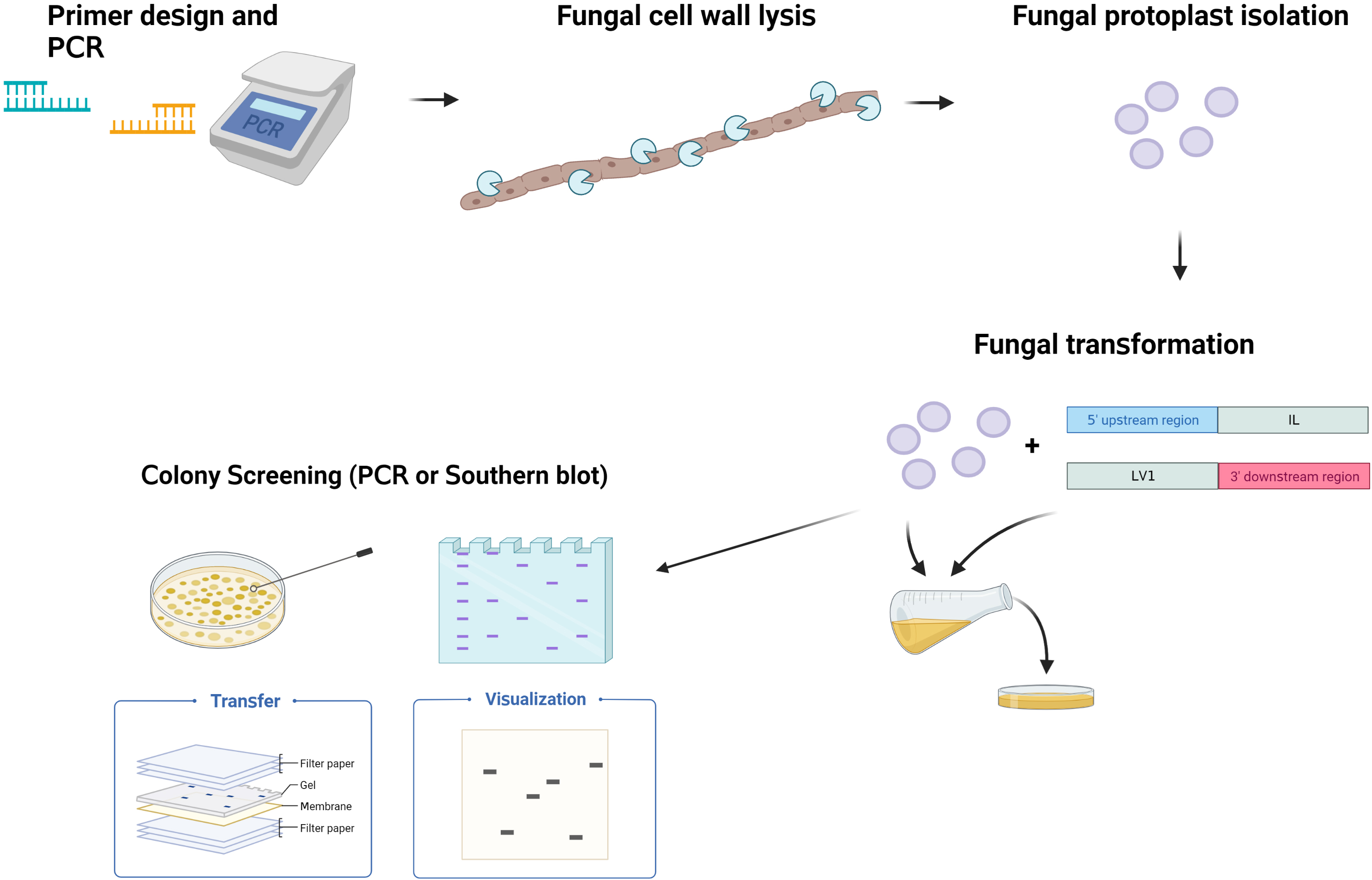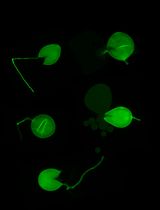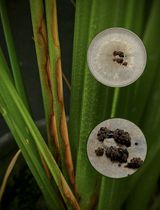- EN - English
- CN - 中文
Gene Replacement by a Selectable Marker in the Filamentous Fungus Magnaporthe oryzae
丝状真菌 Magnaporthe oryzae 中选择性标记的基因替换
发布: 2023年09月05日第13卷第17期 DOI: 10.21769/BioProtoc.4809 浏览次数: 1813
评审: Amey RedkarAnonymous reviewer(s)
Abstract
Magnaporthe oryzae is a filamentous fungus responsible for the detrimental rice blast disease afflicting rice crops worldwide. For years, M. oryzae has served as an excellent model organism to study plant pathogen interactions due to its sequenced genome, its amenability to functional genetics, and its capacity to be tracked in laboratory settings. As such, techniques to genetically manipulate M. oryzae for gene deletion range from genome editing via CRISPR-Cas9 to gene replacement through homologous recombination. This protocol focuses on detailing how to perform gene replacement in the model organism, M. oryzae, through a split marker method. This technique relies on replacing the open reading frame of a gene of interest with a gene conferring resistance to a specific selectable chemical, disrupting the transcription of the gene of interest and generating a knockout mutant M. oryzae strain.
Key features
• Comprehensive overview of primer design, PEG-mediated protoplast transformation, and fungal DNA extraction for screening.
Graphical overview

Background
The fungal plant pathogen Magnaporthe oryzae is the causal agent of rice blast disease. Rice blast afflicts all parts of rice, including leaves, necks, and panicles. Due to its severity, rice blast continues to annihilate rice crops worldwide every year (Fernandez and Orth, 2018; Asibi et al., 2019). As such, dissecting the intricacies of M. oryzae biology is vital to further our understanding of this devastating plant pathogen. As an organism that can be cultivated in the lab as well as genetically manipulated, M. oryzae serves as a model organism to elucidate the molecular basis of rice blast disease and plant pathogen interactions. M. oryzae genetic transformations enable researchers to characterize protein functionality through gene deletions or visualize protein localization through fluorescent tagging. Through editing of the M. oryzae genome, methods to prevent the spread of this disease may be developed. For years, the split marker method has been a key approach for gene deletions in M. oryzae (Sweigard et al., 1995; Fernandez et al., 2014a, 2014b, and 2021). Relying on the homologous recombination that occurs naturally in M. oryzae, the split marker method entails generating flanking regions of a gene of interest through two rounds of PCR and fusing each of them to half of a selectable marker, without requiring any subcloning. This method relies on three homologous recombination events occurring, with two events fusing the flank regions to each half of the selectable marker, and one fusing the selectable marker cassette together. Combining these flanks with M. oryzae protoplasts will generate mutants that have replaced the gene of interest with the selectable marker. In more recent times, various methods for gene editing have been reported. For instance, CRISPR-Cas9-based approaches have been applied for gene editing in M. oryzae (Foster et al., 2018). However, the split marker method has been widely utilized throughout the years due to its convenient, effective, and inexpensive features that facilitate the generation of mutant strains in M. oryzae.
Materials and reagents
Biological materials
Magnaporthe oryzae entry strain of choice, such as Guy11 as used in this protocol (Guy11 strain can be obtained from the Fungal Genetics Stock Center).
Reagents
Yeast nitrogen base w/o amino acids (BD Difco, catalog number: 233520)
Ammonium nitrate 98%, ACS reagent (Thermo Fisher, catalog number: 423350250)
L-Asparagine, 99% (Thermo Fisher, catalog number: B21473.36)
Dextrose/D-(+)-glucose anhydrous ACS reagent grade (MP Biomedicals, catalog number: 152527)
Sucrose (Thermo Fisher, catalog number: J65148.36)
Agar (Sigma-Aldrich, catalog number: A1296-100G)
Peptone (Thermo Fisher, catalog number: 211677)
Yeast extract (Thermo Fisher, catalog number: 212750)
Casamino acids (Thermo Fisher, catalog number: 228820)
NaOH (Sigma-Aldrich, catalog number: S5881-500G)
Na2HPO4 (Sigma-Aldrich, catalog number: S9763-100G)
100% ethanol (Thermo Fisher, catalog number: T038181000)
100% isopropanol (Thermo Fisher, catalog number: T036181000)
RNase (Sigma-Aldrich, catalog number: 10109142001)
Sodium nitrate (Sigma-Aldrich, catalog number: 221341-500G)
Potassium chloride (Thermo Fisher, catalog number: A11662.0B)
Magnesium sulfate heptahydrate (Thermo Fisher, catalog number: A14491.0B)
Potassium phosphate, dibasic (Sigma-Aldrich, catalog number: P3786-100G)
Zinc sulphate heptahydrate (Sigma-Aldrich, catalog number: Z0635-100G)
Boric acid (VWR, catalog number: BDH9222-500G)
Manganese chloride (Thermo Fisher, catalog number: 271410250)
Iron sulfate heptahydrate, ACS, 99+% (Alta Aesar, catalog number: 14498-30)
Cobalt chloride hexahydrate (Thermo Fisher, catalog number: 011344.30)
Copper sulfate pentahydrate (Thermo Fisher, catalog number: 197722500)
Sodium molybdate (Thermo Fisher, catalog number: 206371000)
Na4EDTA (Thermo Fisher, catalog number: J15700.A1)
Biotin (Sigma-Aldrich, catalog number: B4501-100MG)
Pyridoxin (Sigma-Aldrich, catalog number: P5669-25G)
Thiamine (Thermo Fisher, catalog number: 148991000)
Riboflavin (Sigma-Aldrich, catalog number: 47861)
PABA (Sigma-Aldrich, catalog number: A9878-5G)
Nicotinic acid (Sigma-Aldrich, catalog number: N0761-100G)
1 M Tris-HCl, pH 8.0 (Thermo Fisher, catalog number: 15568025)
0.5 M EDTA, pH 8.0 (Sigma-Aldrich, catalog number: 324506-100ML)
Sorbitol (Thermo Fisher, catalog number: 036404.A3)
Lysing enzymes from Trichoderma (Sigma-Aldrich, catalog number: L1412)
1 M Tris-HCl, pH 7.5 (Thermo Fisher, catalog number: 15567027)
1 M CaCl2 (Thermo Fisher, catalog number: J63122.AD)
PEG 4000 (Polysciences, catalog number: 16861-250)
Chlorimuron ethyl (Sulfonylurea) (Thermo Fisher, catalog number: J66605.03)
Hygromycin B (Thermo Fisher, catalog number: 10687010)
Penicillin/Streptomycin/Neomycin (PSN) antibiotic 100× solution (Thermo Fisher, catalog number: 15640055)
Q5 DNA polymerase (NEB, catalog number: M0491S)
PowerPol 2× PCR polymerase mix (Abclonal, catalog number: RK20718)
Solutions
20× (+) NO3 salts (see Recipes)
BDCM bottom media (see Recipes)
BDCM top media (see Recipes)
Liquid CM (see Recipes)
CM bottom media (see Recipes)
CM top media (see Recipes)
Trace elements (see Recipes)
Vitamin solution (see Recipes)
DNA extraction buffer (see Recipes)
70% ethanol (see Recipes)
Osmotic (OM) buffer (see Recipes)
ST buffer (see Recipes)
STC buffer (see Recipes)
PTC buffer (see Recipes)
1 M NaPO4 (pH 5.8) (see Recipes)
Recipes
20× (+) NO3 salts (1 L)
Reagent Quantity Sodium nitrate 120.0 g Potassium chloride 10.4 g Magnesium sulfate 10.4 g Potassium phosphate 30.4 g H2O Up to 1 L Autoclave at 121 °C for 25 min, cool to room temperature, then store at 4 °C.
BDCM bottom (1 L)
Reagent Quantity Yeast nitrogen base w/o amino acids 1.7 g Ammonium nitrate 2.0 g L-Asparagine 1.0 g Dextrose 10.0 g Sucrose 273.83 g H2O Up to 1 L Agar 1.5 g/100 mL Adjust pH to 6.0 with 1 M Na2HPO4 and autoclave at 121 °C for 25 min.
BDCM top (1 L)
Reagent Quantity Yeast nitrogen base w/o amino acids 1.7 g Ammonium nitrate 2.0 g L-Asparagine 1.0 g Dextrose 10.0 g H2O Up to 1 L Agar 1.0 g/100 mL Adjust pH to 6.0 with 1 M Na2HPO4 and autoclave at 121 °C for 25 min.
Liquid CM (1 L)
Reagent Quantity 20× (+) NO3 salts 50.0 mL Trace elements 1.0 mL Vitamin solution 1.0 mL Peptone 2.0 g Yeast extract 1.0 g Casamino acids 1.0 g Dextrose 10.0 g H2O Up to 1 L Adjust pH to 6.5 with 1 M NaOH and autoclave at 121 °C for 25 min.
CM bottom (1 L)
Reagent Quantity 20× (+) NO3 salts 50.0 mL Trace elements 1.0 mL Vitamin solution 1.0 mL Peptone 2.0 g Yeast extract 1.0 g Casamino acids 1.0 g Dextrose 10.0 g Sucrose 273.83 g H2O Up to 1 L Agar 1.5 g/100 mL Adjust pH to 6.5 with 1 M NaOH and autoclave at 121 °C for 25 min.
CM top (1 L)
Reagent Quantity 20× (+) NO3 salts 50.0 mL Trace elements 1.0 mL Vitamin solution 1.0 mL Peptone 2.0 g Yeast extract 1.0 g Casamino acids 1.0 g Dextrose 10.0 g H2O Up to 1 L Agar 1.0 g/100 mL Adjust pH to 6.5 with 1 M NaOH and autoclave at 121 °C for 25 min.
Trace elements (100 mL)
Reagent Quantity Sterile, autoclaved H2O 80 mL Zinc sulfate 2.2 g Boric acid 1.1 g Manganese chloride 0.5 g Iron sulfate 0.5 g Cobalt chloride hexahydrate 0.17 g Copper sulfate pentahydrate 0.16 g Sodium molybdate 0.15 g Na4EDTA 5.0 g Add all reagents in order. Using a hot plate, stir the solution until it comes to a boil. Cool to 60 °C and adjust the pH to 6.5 with 1 M KOH. Cool to room temperature. Adjust volume to 100 mL with ddH2O. Place in autoclaved bottles. Store at 4 °C. The solution should be a deep violet color before use.
Vitamin solution (100 mL)
Reagent Quantity Biotin 0.01 g Pyridoxin 0.01 g Thiamine 0.01 g Riboflavin 0.01 g PABA (p-aminobenzoic acid) 0.01 g Nicotinic acid 0.01 g Sterile, autoclaved H2O Up to 100 mL Place in autoclaved bottles. Store in the dark at 4 °C.
DNA extraction buffer (100 mL)
Reagent Quantity Potassium chloride 7.45 g 1 M Tris-HCl (pH 8.0) 10 mL 0.5 M EDTA (pH 8.0) 2 mL H2O Up to 100 mL Filter sterilize for long-term storage.
70% ethanol (1 L)
Reagent Final concentration Quantity Ethanol (absolute) 70% 700 mL ddH2O n/a 300 mL Total n/a 1000 mL Osmotic (OM) buffer (100 mL)
Reagent Quantity Magnesium sulfate heptahydrate 29.0 g 1 M NaPO4 (pH 5.8) 1 mL Lysing enzymes from Trichoderma 0.75 g H2O Up to 100 mL Adjust pH to 5.5 with 1 M Na2HPO4. Filter sterilize using a 0.45 μm syringe filter into 50 mL centrifuge tubes. Two 50 mL tubes should have 40 mL of OM buffer, while a third 50 mL tube should contain the remaining 20 mL. OM should be prepared the day before using and placed at 4 °C overnight.
ST buffer (500 mL)
Reagent Quantity Sorbitol 54.66 g 1 M Tris-HCl (pH 7.0) 50 mL H2O Up to 500 mL Autoclave for 25 min at 121 °C and store at 4 °C.
STC buffer (500 mL)
Reagent Quantity Sorbitol 109.32 g 1 M Tris-HCl (pH 7.5) 5.0 mL 1 M CaCl2 5.0 mL H2O Up to 500 mL Autoclave for 25 min at 121 °C and store at 4 °C.
PTC buffer (20 mL)
Reagent Quantity PEG 4000 8.0 g Sorbitol 3.64 g 1 M Tris-HCl (pH 7.5) 200 μL 1 M CaCl2 200 μL H2O Up to 20 mL Autoclave for 25 min at 121 °C and store at room temperature.
1 M NaPO4 (pH 5.8)
Reagent Amount 1 M NaH2PO4 92.1 mL H2O Up to 100 mL Adjust pH to 5.8 with 1 M Na2HPO4. Bring volume up to 100 mL and autoclave for 25 min at 121 °C.
Laboratory supplies
Pipettes 1,000 (Sartorius, catalog number: 14532053), 10 (Sartorius, catalog number: 11014473), and 200 μL (Sartorius, catalog number: 10195873)
Serological pipette (Scilogex SCI-Pet, Amazon)
25 mL serological pipette (Genesee Scientific, catalog number: 12-106)
Hemocytometer (Fisher Scientific, catalog number: 02-671-5)
Petri dishes (Fisher Scientific, catalog number: FB0875713)
Scalpel (Feather, catalog number: 02058370)
Miracloth (Calbiochem, catalog number: B36658)
Oakridge tube (Thermo Fisher, catalog number: 3119-0050)
50 mL conical tubes (Corning, catalog number: 430291)
500 mL flasks (Pyrex, catalog number: 4980)
Sterile paper towels (Scott multifold paper towels, Amazon)
Sterile funnel (Thermo Fisher, catalog number: 4252-0065PK)
100 mL bottles (Kimax, catalog number: 14397)
Dark trays (Mr. Pen plant trays, Amazon)
Aluminum foil (Reynolds Wrap, Amazon)
Incubator (Precision, catalog number: 31483)
1.5 mL microcentrifuge tubes (Fisher Scientific, catalog number: 05-408-130)
0.45 μm syringe filters (Fisher Scientific, catalog number: 09-720-514)
Monarch PCR purification kit (NEB, catalog number: T1030S)
Equipment
Incubator (Percival, model: I36VL)
Centrifuge (Eppendorf, model: Centrifuge 5810 R with S-4-104 rotor)
Water bath (Thermo Fisher, model: 180 Water Bath Series)
Two-speed Waring laboratory blender (Fisher Scientific, catalog number: 7010S)
Eberbach container for Waring blenders (Fisher Scientific, catalog number: 14-509-25)
Incu-shaker (Benchmark, model: 10LR)
Thermal cycler (Bio-Rad, model: C1000 Touch)
Vacufuge plus (Eppendorf, model: 022820109)
Centrifuge for Eppendorf tubes (Eppendorf, model: Centrifuge 5418)
Homogenizer (Amazon, SP Bel-Art ProCulture F65100-0000)
Hot plate and stirrer (Thermo Fisher, catalog number: SP88854100)
Procedure
文章信息
版权信息
© 2023 The Author(s); This is an open access article under the CC BY-NC license (https://creativecommons.org/licenses/by-nc/4.0/).
如何引用
Garcia, N., Farmer, A., Baptiste, R. and Fernandez, J. (2023). Gene Replacement by a Selectable Marker in the Filamentous Fungus Magnaporthe oryzae. Bio-protocol 13(17): e4809. DOI: 10.21769/BioProtoc.4809.
分类
微生物学 > 微生物-宿主相互作用 > 真菌
分子生物学 > DNA > 转化
您对这篇实验方法有问题吗?
在此处发布您的问题,我们将邀请本文作者来回答。同时,我们会将您的问题发布到Bio-protocol Exchange,以便寻求社区成员的帮助。
提问指南
+ 问题描述
写下详细的问题描述,包括所有有助于他人回答您问题的信息(例如实验过程、条件和相关图像等)。
Share
Bluesky
X
Copy link












